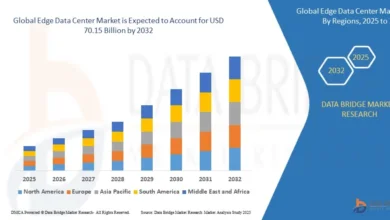Merchandise Inventory Management: A Complete Guide for Retail Success

In the fast-changing retail industry, merchandise inventory management plays a critical role in ensuring the right products are available at the right time, in the right quantities, and at the right locations. For retailers, inventory is both an asset and a challenge—mismanagement can lead to stockouts, excess inventory, higher costs, and dissatisfied customers.
By adopting robust merchandise inventory management practices and tools, retailers can improve product availability, minimize waste, and enhance profitability while meeting customer expectations across physical and digital channels.
What is Merchandise Inventory Management?
Merchandise inventory management is the process of tracking, controlling, and optimizing a retailer’s stock of goods throughout the supply chain. It ensures that products are ordered, stored, distributed, and sold in a way that maximizes sales and reduces operational costs.
It goes beyond basic stock control—it integrates planning, demand forecasting, replenishment, pricing, and reporting to give retailers a holistic view of their merchandise lifecycle.
Importance of Merchandise Inventory Management
Efficient inventory management is the backbone of successful retail operations. Here’s why it is so important:
-
Avoids Stockouts – Prevents lost sales and customer dissatisfaction due to unavailable items.
-
Reduces Overstocking – Minimizes excess inventory and markdown costs.
-
Improves Cash Flow – Ensures capital is not tied up in unsold stock.
-
Enhances Customer Satisfaction – Keeps popular products readily available.
-
Supports Omnichannel Retailing – Provides real-time visibility across online and offline stores.
-
Drives Data-Driven Decisions – Helps retailers predict demand and plan purchases accurately.
Key Functions of Merchandise Inventory Management
Effective merchandise inventory management covers multiple areas of retail operations, including:
1. Demand Forecasting
Predicting customer demand using sales history, market trends, and seasonal patterns to ensure accurate stock planning.
2. Inventory Tracking
Monitoring stock levels in real-time across warehouses, stores, and online platforms.
3. Replenishment Planning
Automating reorders to maintain optimal stock levels and avoid shortages.
4. Assortment Management
Ensuring the right mix of products is available to cater to customer preferences in different locations.
5. Pricing & Markdown Optimization
Adjusting prices based on demand, competition, and inventory levels to maximize profit.
6. Supplier Collaboration
Working closely with vendors to reduce lead times and ensure smooth supply chain operations.
7. Reporting & Analytics
Generating insights into sales performance, turnover rates, and inventory health to guide business decisions.
Challenges in Merchandise Inventory Management
Retailers often face hurdles in managing merchandise effectively:
-
Inaccurate Demand Forecasting – Sudden changes in consumer preferences can lead to mismatches in supply.
-
Omnichannel Complexity – Balancing stock between physical stores and e-commerce platforms can be difficult.
-
Supply Chain Disruptions – Global logistics delays affect product availability.
-
Data Silos – Lack of integrated systems leads to poor visibility across channels.
-
Shrinkage & Losses – Theft, misplacement, or damages reduce inventory accuracy.
-
Excess Inventory – Overstocking ties up capital and forces markdowns.
Benefits of Effective Merchandise Inventory Management
When implemented correctly, strong inventory management strategies offer significant benefits:
-
Higher Sales & Revenue – Ensures products customers want are always available.
-
Cost Savings – Reduces carrying costs, markdowns, and wastage.
-
Better Customer Experience – Improves satisfaction and loyalty with consistent availability.
-
Efficient Supply Chain – Strengthens collaboration with suppliers and distributors.
-
Scalable Growth – Supports business expansion into new regions and channels.
Techniques for Merchandise Inventory Management
Retailers use several proven methods to optimize merchandise management:
1. ABC Analysis
Classifies inventory into categories (A – high value, B – medium, C – low value) to prioritize management efforts.
2. Just-in-Time (JIT) Inventory
Minimizes storage costs by receiving goods only when needed.
3. Economic Order Quantity (EOQ)
Determines the ideal order quantity that minimizes total inventory costs.
4. Perpetual Inventory System
Uses technology to track stock in real-time for higher accuracy.
5. Safety Stock Planning
Maintains a buffer inventory to protect against unexpected demand or supply delays.
6. Dropshipping Models
Retailers avoid holding stock by shipping directly from suppliers to customers.
Role of Technology in Merchandise Inventory Management
Modern retail relies heavily on technology to streamline inventory operations. Key technological solutions include:
-
Inventory Management Software – Automates tracking, replenishment, and reporting.
-
Cloud-Based Systems – Provide real-time access across multiple channels and locations.
-
Artificial Intelligence (AI) & Machine Learning – Predict demand, optimize replenishment, and personalize product offerings.
-
Radio Frequency Identification (RFID) – Improves stock visibility and reduces manual errors.
-
POS System Integration – Syncs sales data with inventory levels for accuracy.
-
Omnichannel Platforms – Unify stock management across e-commerce, stores, and warehouses.
Best Practices for Merchandise Inventory Management
To achieve efficiency and accuracy, retailers should follow these best practices:
-
Adopt Real-Time Inventory Tracking – Use advanced software to monitor stock levels continuously.
-
Integrate Systems Across Channels – Ensure seamless inventory visibility between stores, warehouses, and online platforms.
-
Leverage Data Analytics – Predict demand trends and align procurement strategies.
-
Regularly Audit Inventory – Conduct cycle counts to ensure accuracy.
-
Automate Replenishment – Reduce human error and save time with automated reorder systems.
-
Align Inventory with Customer Insights – Stock products that reflect consumer preferences and seasonal demand.
-
Plan for Supply Chain Disruptions – Maintain safety stock and diversify supplier networks.
Merchandise Inventory Management Software Solutions
Some of the leading software solutions helping retailers manage inventory include:
-
Oracle NetSuite Inventory Management – Cloud-based solution for multi-channel retail.
-
SAP S/4HANA for Retail – Enterprise-level merchandise management system.
-
Zoho Inventory – Best for small to mid-sized retailers.
-
TradeGecko (QuickBooks Commerce) – Designed for e-commerce and wholesale businesses.
-
Fishbowl Inventory – Great for manufacturers and distributors.
-
Blue Yonder (JDA Software) – Advanced AI-driven demand forecasting.
Future Trends in Merchandise Inventory Management
As retail continues to evolve, new technologies and trends are shaping the future of inventory management:
-
AI-Powered Forecasting – Improving accuracy in predicting customer demand.
-
Blockchain Integration – Enhancing transparency and traceability across the supply chain.
-
Sustainability Practices – Managing eco-friendly inventory to meet consumer expectations.
-
Augmented Reality (AR) in Warehousing – Helping staff locate and manage stock faster.
-
IoT-Enabled Smart Shelves – Real-time shelf monitoring in physical stores.
-
Hyper-Personalization – Stocking products tailored to individual customer needs.
Conclusion
Merchandise inventory management is at the heart of successful retail operations. It ensures retailers maintain the right stock levels, reduce costs, and deliver a superior customer experience. By leveraging modern tools, advanced forecasting, and best practices, retailers can streamline operations and position themselves for long-term success.
In today’s omnichannel retail environment, businesses that invest in robust merchandise inventory management systems will enjoy higher profitability, improved efficiency, and stronger customer loyalty.








